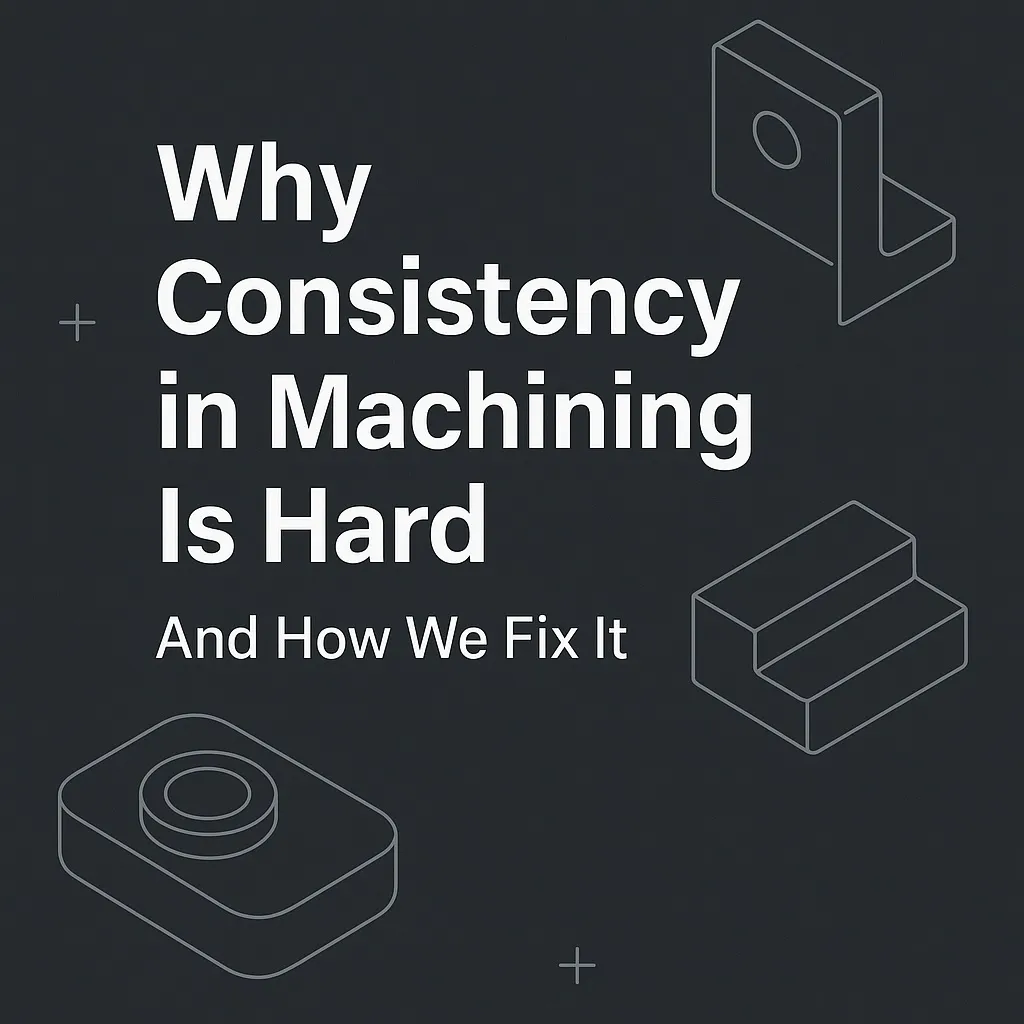You'd think manufacturing the same part twice would give you the same result. Same CAD file, same specs, same everything. But that's not always what happens. We've seen it firsthand—and so have a lot of our customers.
One customer told us they'd ordered the same part from another platform three times. The first part worked fine. The second had a tight fit. The third didn’t fit at all. Nothing changed in the file, but the results kept changing. And when you're trying to assemble a prototype or test a mechanism, that kind of inconsistency kills momentum.
Why It Happens
It's not always about mistakes. It’s the nature of the system.
Most online manufacturing platforms assign your job to whoever can take it—or worse, whoever bids the lowest. And even if they tell you it's going to the "best match," there's no guarantee that shop is using the same tooling, the same machine, or the same attention to detail as last time.
Sometimes it's a Haas VF2, sometimes a DMG Mori. Sometimes it’s a veteran machinist, other times it’s the new guy. Speeds, feeds, fixturing—they all play a role. Even two great shops can deliver slightly different results.
What It Breaks
If you’re building jigs, test fixtures, or low-volume production units, you rely on repeatability. When you can’t trust that a part made today will match the one from last month, you start wasting time testing fits, tweaking designs, or worse, questioning your own CAD model.
That inconsistency can delay product timelines, confuse stakeholders, and drain your confidence. Not to mention, it's just plain frustrating.
How We Fix It
At Ziqual, consistency isn't an afterthought—it's baked into how we operate.
- We route repeat jobs to the same shop whenever possible. If a shop delivered it well once, they get first dibs the next time.
- We talk to our machinists. No middlemen, no ticket systems. Actual conversations.
- You talk to them too. If something needs to be clarified, you're not stuck waiting for a project manager to email someone else.
- We keep visual references. Sometimes we’ll take photos or document visual notes so that repeat parts don’t just meet the drawing—they look the same too.
- We’re building digital recipes. A QR code on your part can bring up machining notes, finishes, and anything else we documented from the first time. That way, it’s not just "here's your file again" — it’s "here’s how we made it great the first time."
Real-World Wins
A stealth hardware startup came to us after trying a few different platforms. Their prototype had six interlocking parts, and each time they reordered, they had to rework the fit. With Ziqual, we locked in the setup, documented it, and routed all future orders to the same machinist. They haven’t had to rework a single part since.
Final Thought
Consistency is invisible—until it's gone. Then it becomes all you think about.
Fast is great. Cheap can be fine. But if you can’t rely on your parts to behave the same way every time, what are you really getting?
If you're tired of re-checking fits and second-guessing vendors, give Ziqual a shot. Your parts will thank you.
